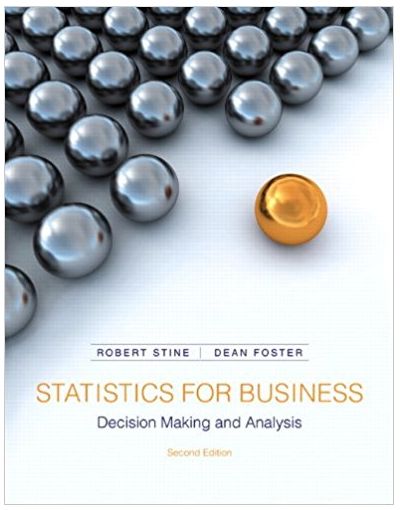This data table contains accounting and financial data that describe 324 companies operating in the information sector.
Question:
(a) Examine scatterplots of the log of spending on R&D versus the log of total assets and the log of the cost of goods sold. Then consider the scatterplot of the log of total assets versus the log of the cost of goods sold. Do you notice any unusual features in the data? Do the relevant plots appear straight enough for multiple regression?
(b) Fit the indicated multiple regression and show a summary of the estimated features of the model.
(c) Does the estimated model appear to meet the conditions for the use of the MRM?
(d) Does the fit of this model explain statistically significantly more variation in the log of spending on R&D than a model that uses the log of assets alone?
The multiple regression in part (b) has all variables on a natural log scale. To interpret the equation, note that the sum of natural logs is the log of the product, loge x + loge y = loge(xy) and that b loge x = loge xb. Hence, the equation
loge y = b0 + b1 loge x1 + b2 loge x2
is equivalent to
y = eb0 x1b1x2/b2
The slopes in the log-log regression are exponents in an equation that describes y as the product of the explanatory variables raised to different powers. These powers are the partial elasticities of the response with respect to the predictors. (See Chapter 20 for a discussion of elasticities.)
(e) Interpret the slope for the log of the cost of goods sold in the equation estimated by the fitted model in part (b). Include the confidence interval in your calculation.
(f) The marginal elasticity of R&D spending with respect to CGS is about 0.60. Why is the partial elasticity in the multiple regression for CGS so different? Is it really that different?
Fantastic news! We've Found the answer you've been seeking!
Step by Step Answer:
Related Book For 

Statistics For Business Decision Making And Analysis
ISBN: 9780321890269
2nd Edition
Authors: Robert Stine, Dean Foster
Question Posted:





